The Lisboa funiculars, in Portugal called ascensor or elevador, are part of the urban public transport system. All three were first operated by the NCAML, the same company that also operated the Estrela and Graça cable tramlines. The funiculars are now operated by the CCFL. As the funiculars are in public streets, the cable is in a conduit slot. The original installations were delivered by Maschinenfabrik Esslingen.
Lavra 1884-1914
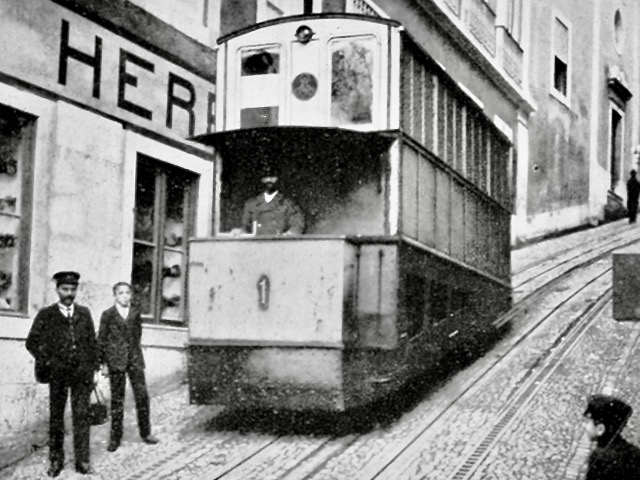
The funicular do Lavra opened on 19 April 1884 by the Companhia de Ascencores Mechanicos de Lisboa (CAML). It’s about 175 m long and has and average gradient of about 23%. The gauge was 1000 mm. For braking the cars had cog-wheels mounted on both wheels at the “outside” of the line. These cog-wheels gripped into a Riggenbach ladder rack next to the rails. Working was originally by using steam power or water counterbalance whereby tanks on the cars were filled with water at the upper terminus and emptied at the lower one. Since 1888 only steam engines were used to propel the cable. In October 1884 the CAML transferred all its concessions and belongings, included the Lavra funicular, to a new company, the Nova Companhia de Ascencores Mechanicos de Lisboa (NCAML) which was later also going to operate the Glória and Bica funiculars and the Estrela and Graça cable trams. In 1898 the cars were replaced by a new type.
Glória 1885-1914
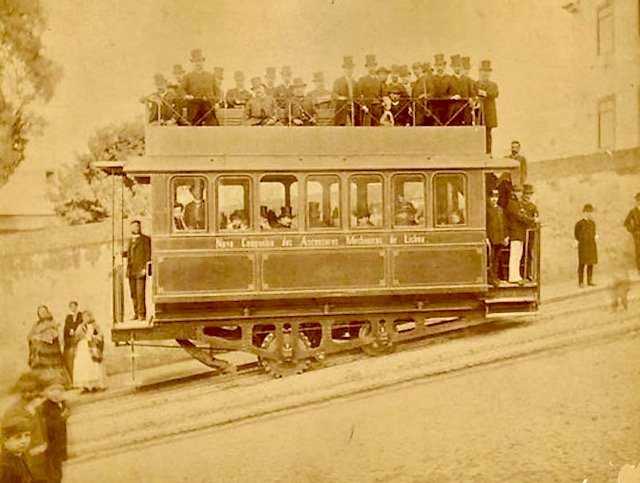
The Glória funicular opened on 24 October 1885. It’s about 250 m long and has an average gradient of about 17%. Also here a Riggenbach ladder rack was used for braking, but in this case at the “inside” of the line. There was only one cogwheel on each car mounted outside on the normal wheel at the lower end of the line. The cars had knife-board benches on the roofs, which could be accessed by a winded staircase on the platform at the hill side. The Glória changed from steam power or water counterbalance to steam power only in 1887.
Bica 1892-1914
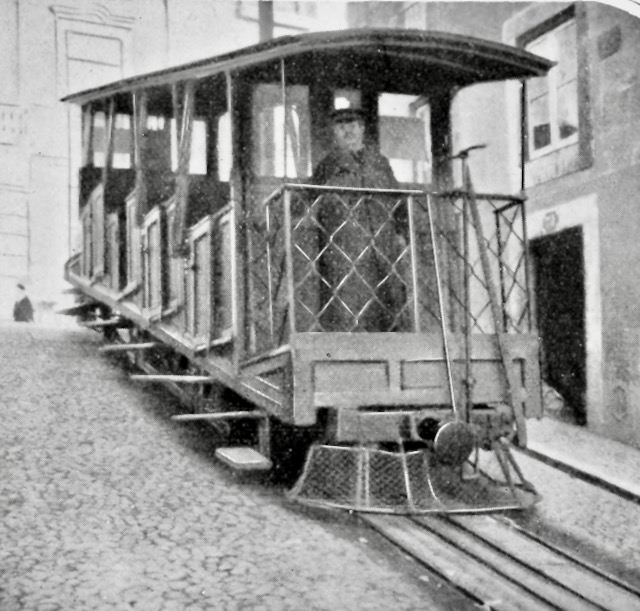
The Bica funicular opened on 28 June 1892. It’s about 260 m long and has an average gradient of almost 18% but a maximum of 28%. The original gauge was 800 mm. It was steam powered from the beginning and had no ladder racks for braking. The original cars were open of stepped type.
Modernisation
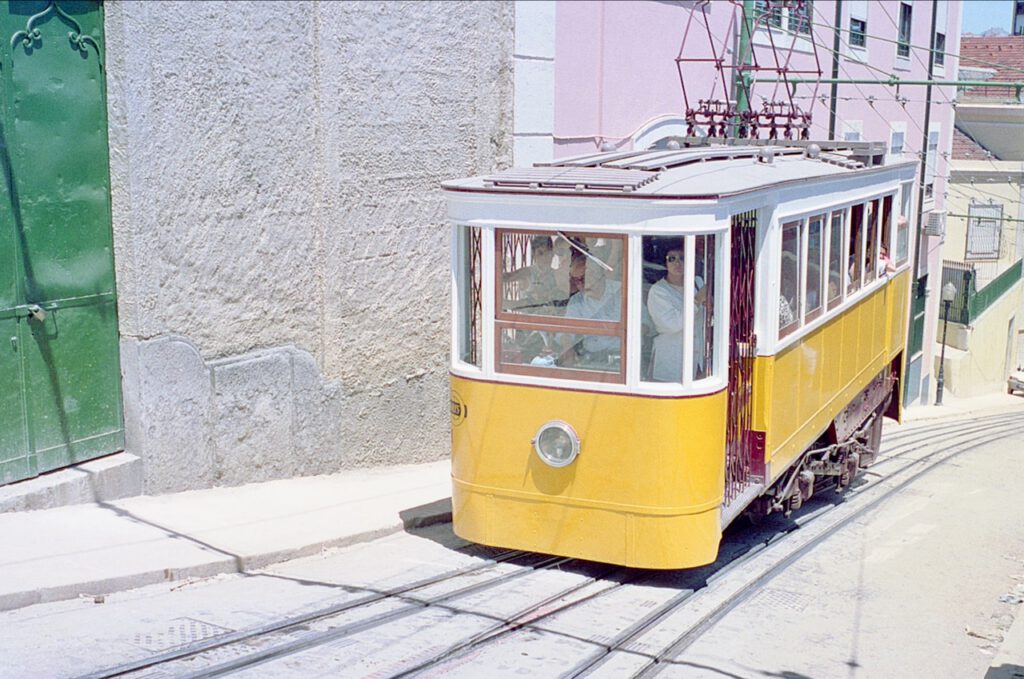
On 31 December 1912 the CCFL took over the NCAML In 1914 all three funiculars were closed for electrification. The propulsion was going to be electric and new cars were ordered in 1913 from United Electric Car Co. The trucks came from Mountain & Gibson and the motors from General Electric. These cars, still in use on the Lavra and Glória, have horizontal bodies, inclined under-frames and cranked Brill type trucks. The Glória funicular reopened on 3 September 1915 and the Lavra on 5 December. The Bica however suffered a serious accident when the new system was tested in October 1916. Due to this incident and the difficult circumstances caused by the war and the social unrest of the early 1920’s, the Bica was not reopened for over a decade.
Lavra and Glória 1915 until now
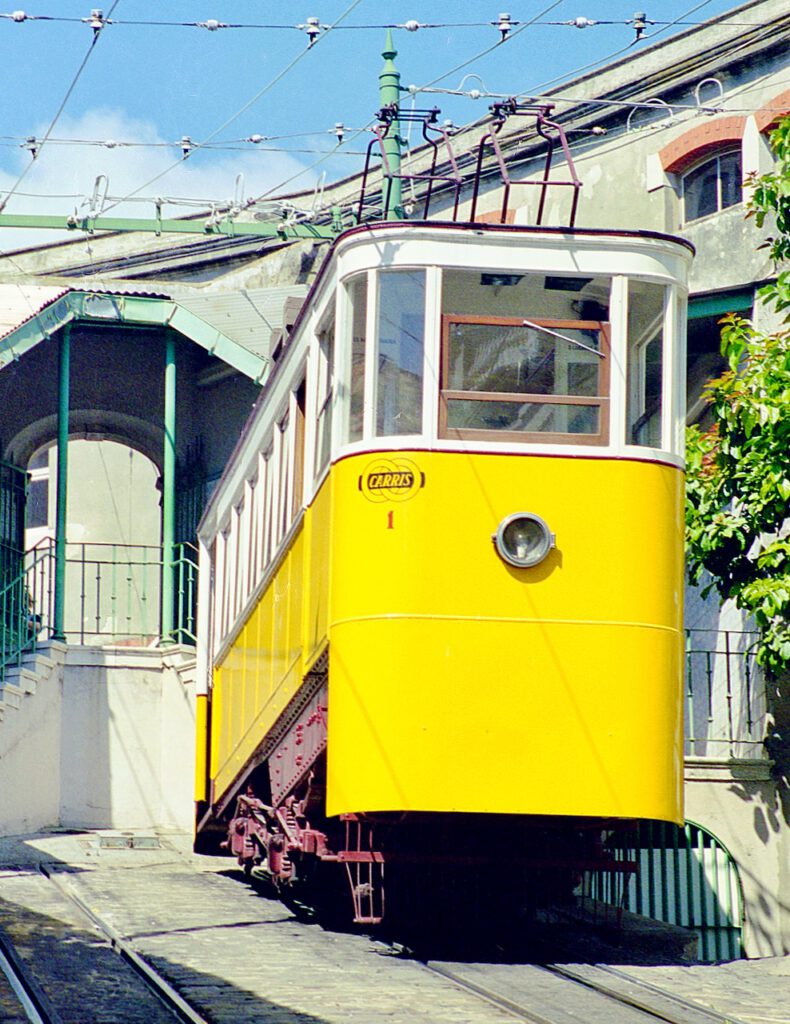
The Glória and Lavra elevadors were rebuilt to the powered counterbalance system. The cars are fitted with two electric motors, drawing current through an overhead wire and a GE five notch controller, and are driven up and down the hill in a similar manner to a tram, the descending car thus helping to pull up the ascending car. In effect, the ascending car‘s controller regulates the power supply to both cars, an arrangement which necessitates four overhead wires. Little has changed for over a century, the cars of both lines still going up and down on a daily base except for temporary closures for maintenance.
On 3 September 2025 a runaway accident of car no.2 killed 16 people and injured over 20 more. The body of car no.2 was complete destroyed.
Bica 1927 until now
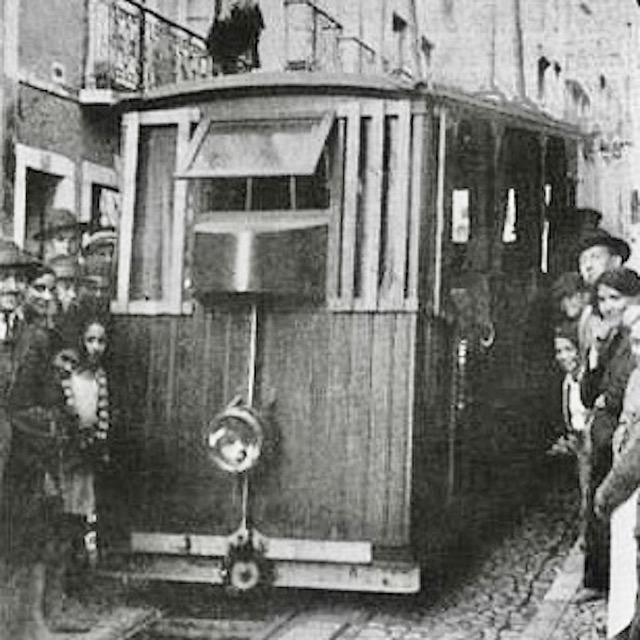
On 6 December 1924 the CML ordered to electrify and reopen the Bica funicular within a year. Instead as originally foreseen and as the Lavra and Glória with motorised cars, the Bica was made to a true funicular with external propulsion. On 2 June 1927 the Bica was finally reopened. It got two rather ugly shed type cars. A newspaper of that time described them as looking like a “Casa do Banho”, apparently with in mind the small outside shed types of bathrooms that were often used in the old days. In 1933 the “sheds” were replaced by the smart looking cars still in use today.
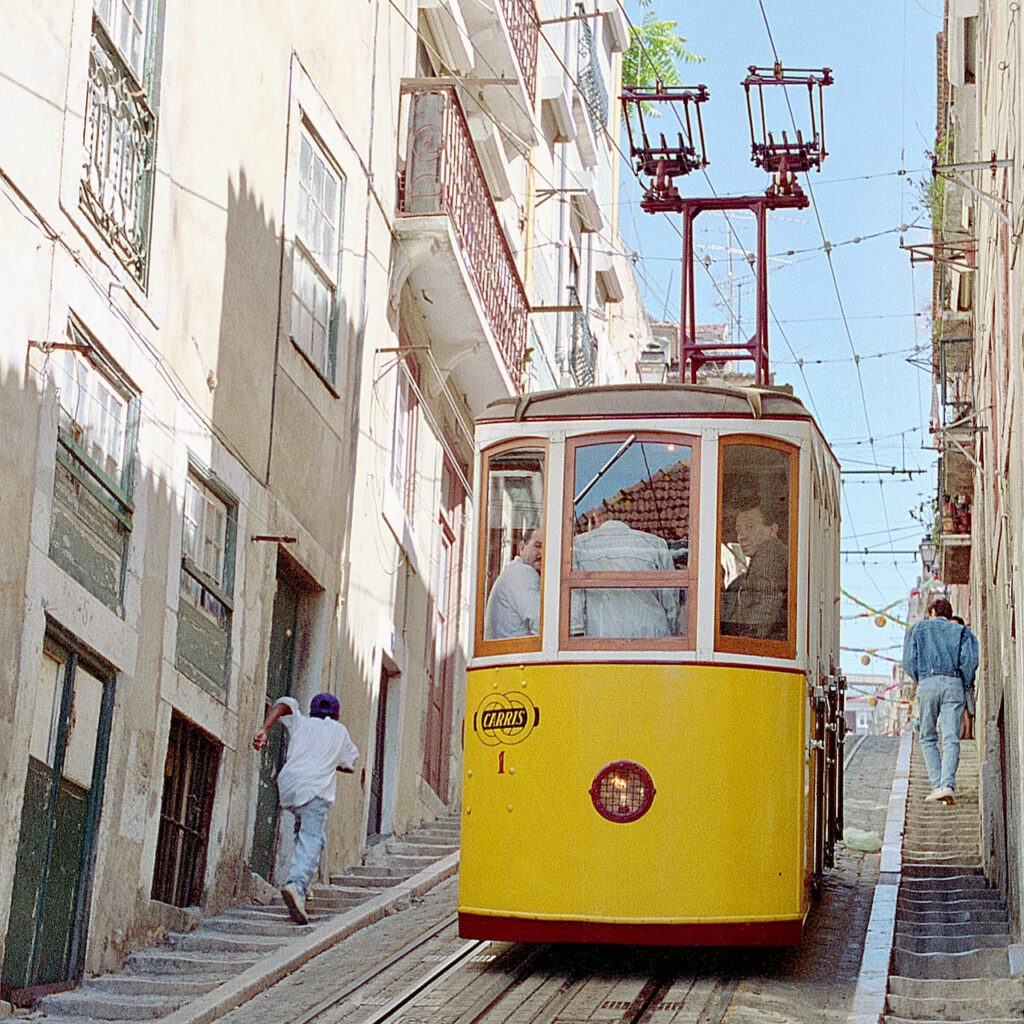
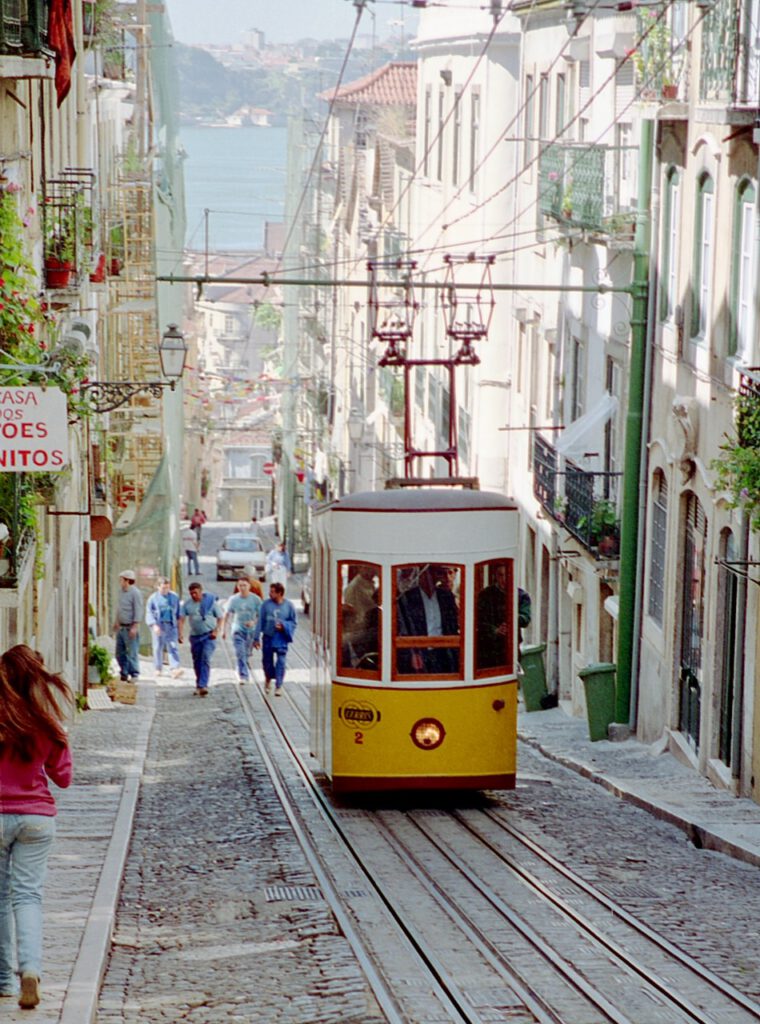
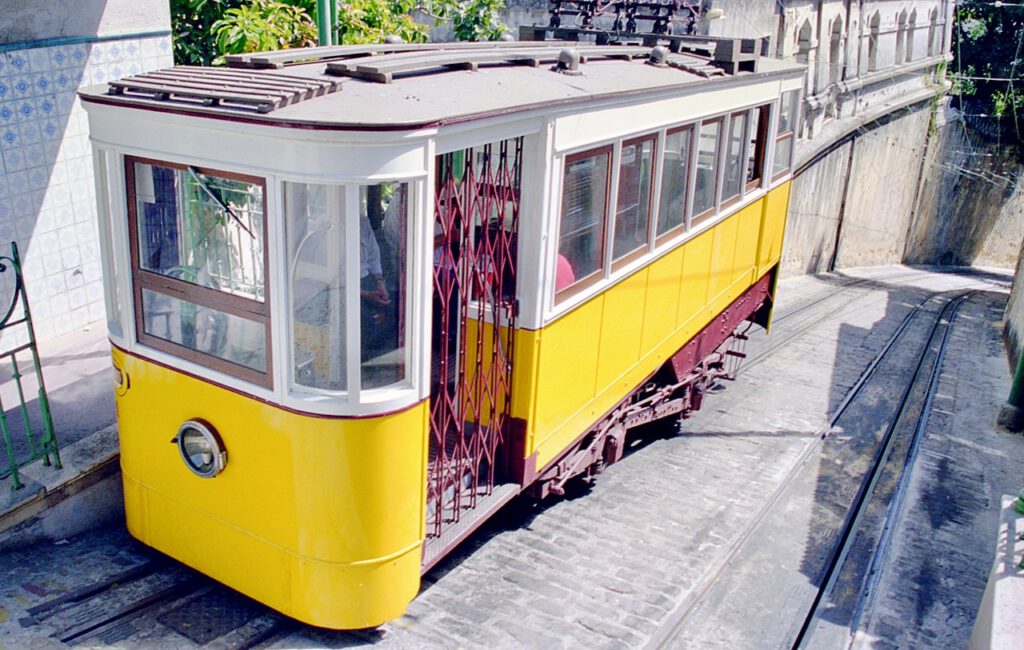
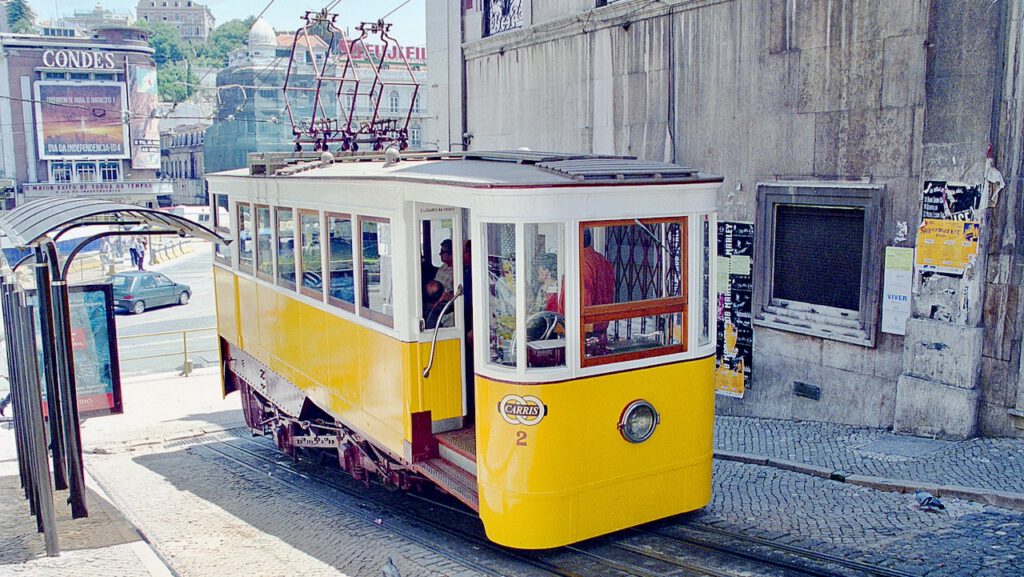
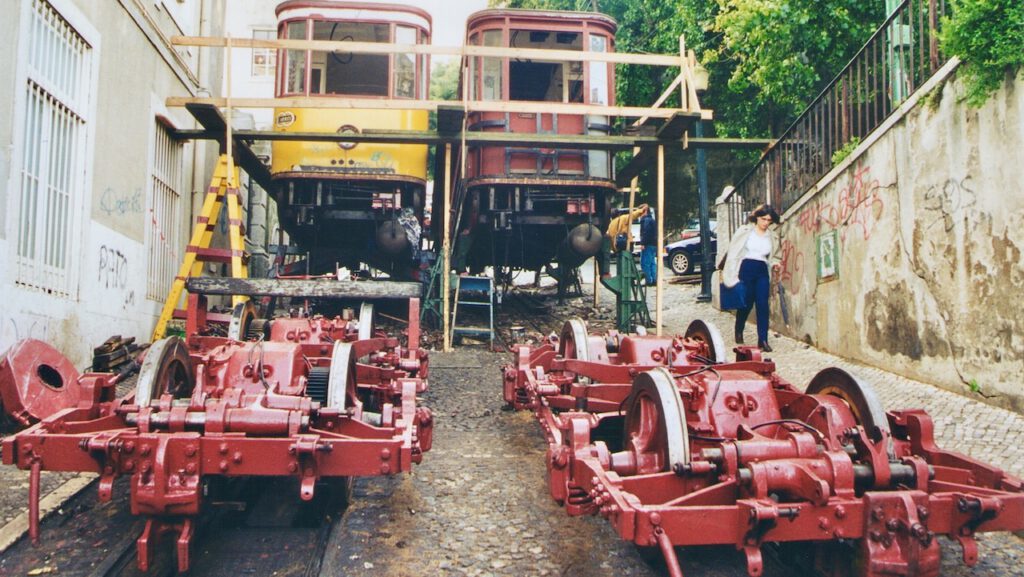


Leave a Reply